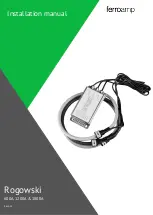
Installation
20
3.4 Wiring Safety Information
When making any wiring connections to the instrument, the following
warnings and notes must be adhered to, as well as any warnings and
notes found throughout the individual installation sections. For more
.
DANGER
Always disconnect power to the instrument when making any
electrical connections.
Electrostatic Discharge (ESD) Considerations
To minimize hazards and ESD risks, maintenance procedures not
requiring power to the analyzer should be performed with power
removed.
Delicate internal electronic components can be damaged by static
electricity, resulting in degraded instrument performance or eventual
failure.
The manufacturer recommends taking the following steps to prevent
ESD damage to the instrument:
• Before touching any electronic components (such as printed circuit cards
and the components on them) discharge static electricity from the body by
touching an earth-grounded metal surface such as the chassis of an
instrument or a metal conduit or pipe.
• To reduce static build-up, avoid excessive movement. Transport static-
sensitive components in anti-static containers or packaging.
• To discharge static electricity from the body and keep it
discharged, wear a wrist strap connected by a wire to earth
ground.
• Handle all static-sensitive components in a static-safe area. If
possible, use anti-static floor pads and work bench pads.
Summary of Contents for si792 D series
Page 2: ...2 ...
Page 6: ...Table of Contents 4 ...
Page 12: ...Specifications 10 ...
Page 36: ...Interface and navigation 34 ...
Page 44: ...Operation si792 x D 4 20 mA HART 42 ...
Page 66: ...Operation Foundation Fieldbus 64 ...
Page 72: ...Operation Profibus PA 70 ...
Page 80: ...Maintenance 78 ...
Page 86: ...Troubleshooting 84 ...
Page 88: ...Parts and accessories 86 ...
Page 93: ...Index 91 Z zero adjustment 72 ...
Page 94: ...Index 92 ...
Page 95: ...93 ...
















































